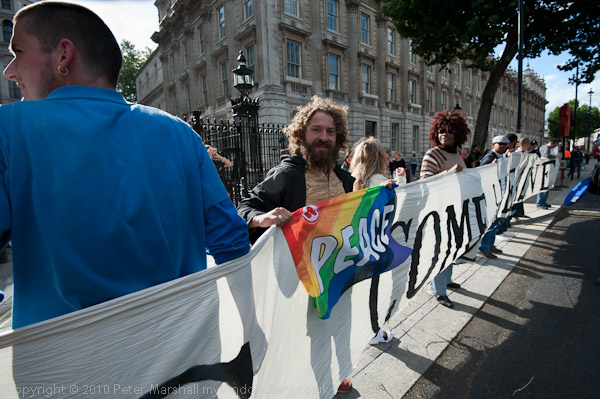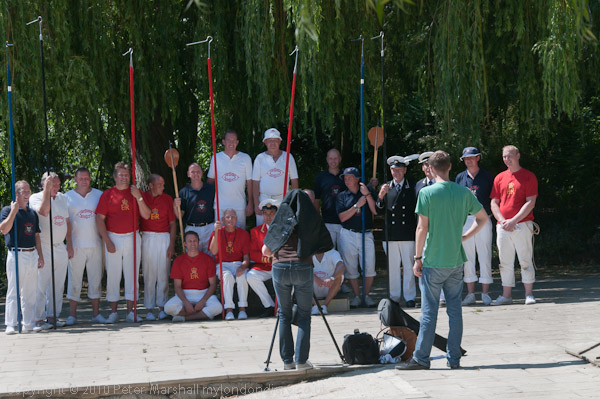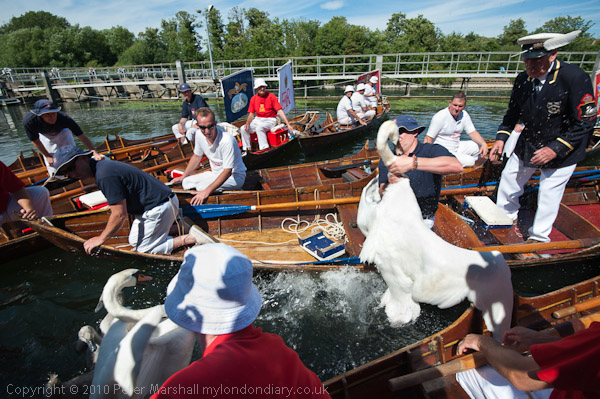A week or two ago I went to a members evening at Photofusion in Brixton, where one of the events on the programme was a demonstration of one of the latest Hasselblad digital models, the H4D with a 50Mp back. It’s basically a 645 format camera although the sensor is rather smaller at 36.8 × 49.1mm, twice the area of that in my Nikon D700.
The camera we were shown by a guy from Calumet came with a fairly hefty 80mm macro and I certainly wouldn’t have wanted to carry that combination too far, but with the normal 80mm standard lens it weighs 2290g, not a huge amount more than the Nikon D700 with the 16-35mm which adds up to around 1800g. Definitely portable if not lightweight.
But of course I wouldn’t be happy for long with only a standard lens, and a couple of lenses would probably double the weight, with the smallish wide-angles weighing in around 900g each and a moderate telephoto at around 1300g.
But I’d miss would be the ability to take several images in rapid succession. The H4D is a little slower than I could wind on with a film camera at 1.1s per image, while the Nikon manages around 5 fps (and 8 fps with a battery pack.)
Of course I wouldn’t want to make many pictures, as 50Mp images take up rather a lot of disk space, and realistically I’d need a faster computer to handle them too. It’s undeniable that if I want to make really big prints the extra pixels would help and there are roughly twice the number of pixels across the frame comparing 50Mp with 12MP, but even at A2 the D700 can do a pretty decent job.
Obviously the H4D-50 isn’t the camera for me, which is just as well considering the price, around £18,000 in the sales, saving about £3000 on the RRP, with another couple of grand for a lens. I can’t even see myself getting the cheaper H4D-40 which you can pick up with lens for a mere £13,000 or so if you shop around, or even a cheaper medium format competitor but I did listen carefully to see what I might be missing.
True Focus and Absolute Position Lock
One thing – and a major USP in both their literature and the talk we got – is True Focus and Absolute Position Lock. The H4D only has a central focus point for autofocus, so you need to focus and then tilt the camera to get an image focussed away from the centre. When you focus, assuming the lens has a flat field of focus, this plane is actually at different distances from the camera, increasing as you move from the centre of the image. So when you tilt the camera to alter the composition you are moving the focus behind the part of the subject on which you focussed. The H4D True Focus detects the tilt and alters the focus to compensate. Clever or not?
Let’s do a little maths. Thankfully we have our friend Pythagoras, who can enable us to avoid trigonometry. Imagine you are taking a full length portrait from about 8 feet away. You tilt your camera up slightly to focus on the eyes, setting the focus distance at 8 ft, then you tilt the camera down, having locked the focus. But the tilt has meant that camera to subject distance is now less than 8 ft, as the distance from the camera to the point in the centre of your image, perhaps now 2 ft lower than where you focussed, is less than 8 ft. How much less? Going to that Greek we find that instead of 8 ft the distance is the square root of (8×8-2×2) which works out as 7.745 ft, a full 3 inches less.
Will it matter? To find out we need to think about depth of field and the sensor/lens and aperture we will be using and decide on an acceptable circle of confusion. It all gets too complicated, so lets just try a simple example and assume we are using a standard 50mm lens on a Nikon D700, and to avoid more maths I’m going to feed those figures into an on-line Depth of Field Calculator. Assume I’ve got a 50mm f1.4 (I don’t) and have decided to use it wide open. DOFMaster tells me if I’ve focussed at 8 ft, the near limit will be 7.69 ft, so those eyes will still be sharp. I don’t think I need a Hasselblad H4D.
Wider Dynamic Range?
The other big point is quality, and as well as superb lenses that also comes down to the large sensor. But it isn’t really the fact that the cells on the sensor are larger and perhaps surprisingly the H4D doesn’t offer the kind of high ISO performance we get on FX format cameras. The big difference, according to the sales talk, is that the sensor is 16 bit rather than 14 bit, and that gives you better tonality and a wider dynamic range.
Well I think, is that so? Certainly for their digital back they claim a dynamic range of 12 stops, which is pretty good. But using the D700 with RAW files and processing with ACR the guys at Digital Photography Review got a best result of 11.6EV which is pretty similar. I think they might squeeze out a little more now with LR3. Perhaps those 2 extra bits don’t offer quite as much as they guy said.
I found it hard not to laugh when he said that shooting a Canon or Nikon DSLR is like working on transparency film. Not if you know what you are doing, and its perhaps significant that DPR note that their best result was almost 5 stops more than the default jpeg dynamic range.
In practice digital has proved itself able to handle almost anything I’ve thrown at it – so long as I’ve got the exposure right (and when working fast that’s often a problem.) Here’s an image I took last Friday at Downing St:

The sun is strong and low, just out of frame. You can just see some detail in the sky at left (the line at the top is actually the edge of my digital portable light shield – my left hand.) I don’t know what the subject dynamic range was, but I do know that I had to do a terrific amount of burning in Lightroom to get that detail to show. Getting the tone I wanted in that blue shirt, the Peace flag and the face of the guy holding it needed a bit of added brightness too.
Getting however many stops of the subject into an 8 bit RGB range is going to be a tricky business with any camera and high contrast scenes will almost always look too flat if this is done without a certain amount of dodging and burning as well as using a curve that flattens unimportant parts of the tonal range. Using a back with inherently greater dynamic range may make the job easier, but in the end – like darkroom printing – it comes down to the skill in interpretation of the negative or RAW file.
It’s a picture I wouldn’t have tried on tranny and would have been tricky on black and white, and which I don’t think my older digital cameras would have managed well. When Digital Photography Review tested the D300 they could only manage just under ten stops, though I think they (and Lightroom) may have improved enough to squeeze out a little more. But certainly the D700’s 11.6 seems good enough. So yet again I don’t really need the H4D!
Making an impression

Under the dark cloth – a DSLR. And why not?
Then on Monday last week I watched a photographer taking a group photograph of the swan uppers and there was the camera all set up on a tripod and covered with a large black dark cloth. I was surprised to think that someone was still using a large format camera but had to laugh when the assistant briefly lifted the cloth to reveal a rather ordinary looking DSLR (it could have been a 25Mp Canon, though I couldn’t from a distance identify it) but I thought that the D700 would probably have done the job adequately. That photographer didn’t need an H4D and nor do I.
Of course back in the old days of film, there were many photographers who used medium or large format for jobs that could readily have been done on 35mm. The larger negs were more forgiving in some respects, particularly over sloppy processing and handling (and some repro guys really were sloppy) and I think the same is true with larger digital files. And many clients, especially those paying big advertising money, were considerably happier to see photographers using large and expensive equipment. Some would specify 4×5″ and never knew when they were given Kodachrome duped up to that size. Perhaps the main selling point of medium format digital is keeping clients happy in much the same way.



 The march came up Whitehall in silence and then burst into applause at the Cenotaph
The march came up Whitehall in silence and then burst into applause at the Cenotaph





